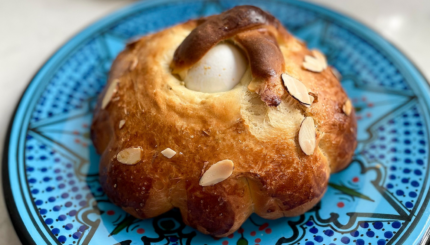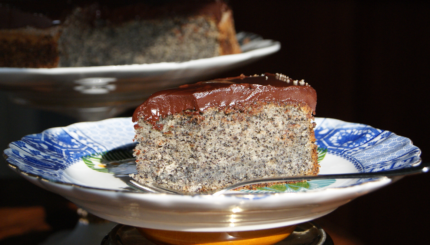The carnivalesque Jewish holiday of Purim celebrates a tale of Jewish survival in the face of near genocide masterminded by the megalomaniac villain of the piece, Haman. The holiday is celebrated with a public reading of the Purim story as well as costumes, plays, carnivals, feasting, and an iconic pastry that, strangely, takes its name from the legendary baddie: hamantaschen
The tradition of eating hamantaschen on Purim began in late 18th-century Germany when pastries filled with poppy seeds were a popular treat. These cookies were called “mohntaschen” which translates to “poppy seed pockets.” In the early 19th century, Germany Jews started making them specifically for Purim and called them “hamantaschen” because the name of the Purim villain, Haman, sounds like “mohn.” Playing off the pun, it was said that the cookies stuffed with seeds represented Haman’s pockets stuffed with bribes.
Later, the triangular-shaped pastry came to be understood not as Haman’s pockets, but as his tricorn hat (though such a style would have been unlikely in ancient Persia, and better represents early modern European styles — like those worn during the American Revolution).
In Israel, the pastries are called oznei haman, meaning “Haman’s ears” which perhaps references a midrash that described the defeated Haman as doubled over with oznayim mekutafot (“clipped ears”). But the triangle-shaped cookies that originated in Germany are not the original oznei haman. For centuries, Sephardic Jews had a different Purim pastry called “Haman’s ears” made of fried dough soaked in syrup or honey.
With your help, My Jewish Learning can provide endless opportunities for learning, connection and discovery.
Today, hamantaschen are enjoyed all over the Jewish world. Poppy seed is still considered a popular and classic filling, but they are now frequently seen stuffed with every kind of jam, chocolate, nuts, and even various savory fillings.
Get Joan Nathan’s classic hamantaschen recipe here.



